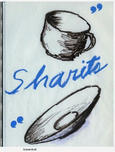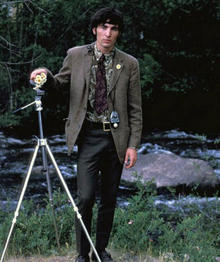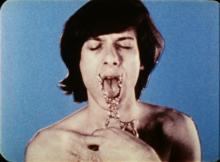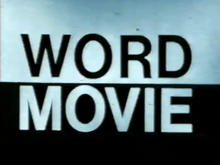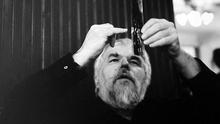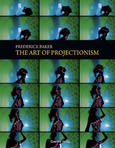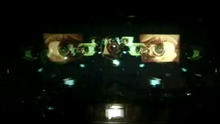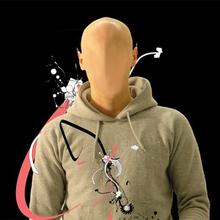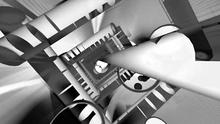Shutter Interface
(1975)by Paul Sharits is a hypnotic work a quartet of 16mm projectors stand, figure-like, side by side on imposing pedestals facing a long wall, creating the flicker effect Sharits was the first to explore in colour films.
If any film installation can be compared to an endlessly prolonged execution of cinematic illusion by firing squad, it’s Paul Sharits’ Shutter Interface (1975). In this hypnotic work – recently restored by Greene Naftali and Anthology Film Archives to its long-unseen, four-screen version – a quartet of 16mm projectors stand, figure-like, side by side on imposing pedestals facing a long wall. Four looped films of varying lengths are unspooled and respooled in jewel-like swathes of colour interspersed with single black frames, creating the flicker effect Sharits – who died in 1993 – was the first to explore in colour films. The images thrown onto the wall overlap at their edges, producing ghostly paler bands where hues mix within the wide polychrome rectangle, complicating patterns that emerge like waves, horizontal pulses or, more eerily, cards shuffled by invisible hands. When the black interstices disrupt the chromatic flood, the soundtracks emit high-frequency, cicada-like tones via speakers placed underneath the projected images, aurally mirroring the whirling shutters.
To best view an installation of Shutter Interface, you have to duck before the line of whirring machines and sit on the floor in front of them. Even when stationed between the projectors and the corresponding images, however, you get the sense of being a witness to a wrenching event, both a viscerally engaged and a detached observer. As Rosalind Krauss noted of another four-projector Sharits installation, Soundstrip/Filmstrip (1972), the panoramic field formed by the overlapping images echoes the Cinemascope format, but the glorious illusion typically associated with widescreen movies is continuously disrupted by the insistently sculptural projectors and bases. Instead of being enveloped, we are, as Krauss wrote, "at a tangent to the illusion, forcibly aware of the generative pair: projector/projected; aware, that is, of the mechanisms that are closer to the birth of the illusion." Sharits viewed such works as locational installations, which he intended to be shown outside of the context of the cinema and saw as having ethical dimensions. (...)
That aggression and erotic pulse also lend an elemental power to works like Shutter Interface, which he structured according to "a dynamic of oscillations and cycles" similar to that found in nature. These days it’s not so strange to find a 16mm projector parked in a gallery, but Sharits’ work gains a particular dynamism in this locational context, at a time when his idio-syncratic achievements are ripe for rediscovery. He went far beyond an analysis of the materials of cinema: in his multi-projector installations, the extermination of illusion also represents an anxious, equally extended rebirth.
Source: Frieze Magazine
